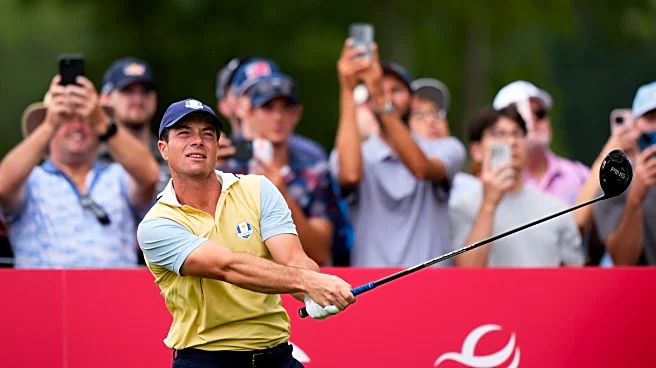What's Happening?
Golf is experiencing a significant shift as it enters the Gen Z era, attracting a younger audience and expanding its reach beyond traditional demographics. According to the National Golf Foundation, over one-third of the U.S. population aged five and above engaged with golf in some form in 2024, with the highest participation among young adults aged 18-34. This trend is supported by increased inclusivity and accessibility, driven by new fit options, a surge in golf content creators, and reduced barriers to entry, such as simulator lounges that offer affordable alternatives to expensive equipment. The sport is evolving with a focus on diversity and modern engagement strategies, appealing to a broader audience.
Why It's Important?
The growing interest in golf among Gen Z signifies a cultural shift that could have lasting impacts on the sport's future. As younger generations embrace golf, the industry may see increased investment in technology and innovation to cater to this demographic. This could lead to more diverse participation, potentially reshaping professional golf to be more inclusive. The economic implications are significant, as increased participation can drive growth in related sectors such as sports equipment, apparel, and media. Golf's adaptation to modern trends may also influence public policy regarding sports accessibility and youth engagement.
What's Next?
The continued integration of Gen Z into golf may prompt further changes in how the sport is marketed and consumed. Stakeholders, including golf associations and businesses, are likely to invest in initiatives that enhance diversity and accessibility. This could involve developing more affordable equipment, expanding digital content, and creating inclusive spaces for new players. As the sport evolves, there may be increased collaboration between traditional golf institutions and new media platforms to sustain engagement and growth.
Beyond the Headlines
The Gen Z-ification of golf highlights broader societal trends towards inclusivity and digital engagement. This shift may encourage other traditional sports to adapt similarly, fostering a more diverse and connected sporting community. The cultural implications extend beyond golf, reflecting changing attitudes towards leisure activities and the importance of accessibility in sports.











